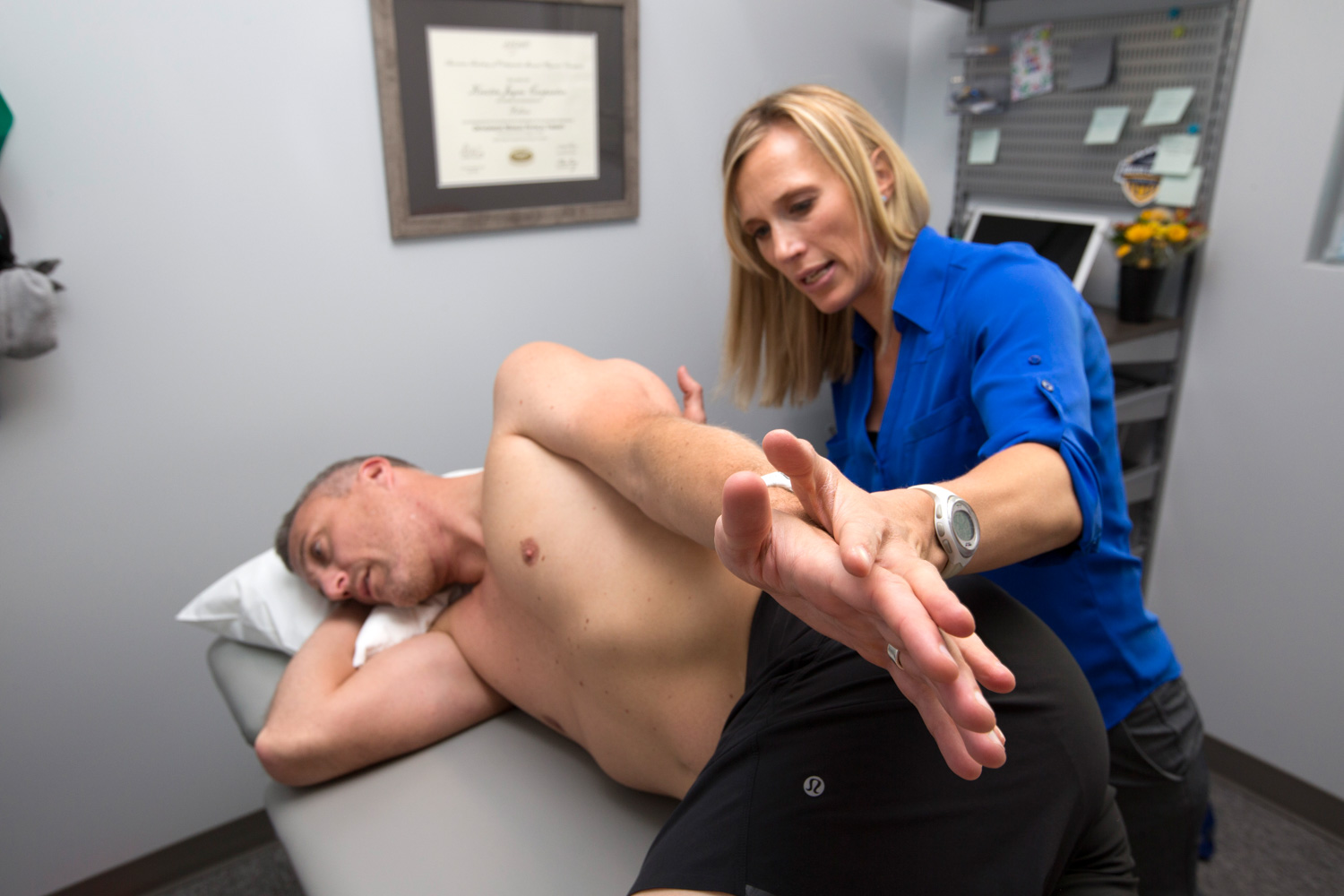Chronic Pain Management

This diagram might be all too familiar. Pain often starts in a specific area, but the longer it persists the more the area of pain expands.
Our chronic pain specialists at Mend want to hear your story.
Treatment for chronic pain requires more than traditional physical therapy.
For decades, healthcare providers have been attempting to treat people with chronic pain using traditional techniques with little success. We now know why…
Chronic pain is different than acute pain (the type of pain you get when you sprain your ankle). Chronic pain does not respond to traditional treatment techniques.
A plethora of new research into this field has unlocked powerful treatment techniques that pull from a variety of specialty fields. As physical therapists we are uniquely equipped with the tools necessary to manage chronic pain.
First, let’s learn some more about chronic pain…

How we got here
In the late 1990s clinicians started looking for new ways to treat chronic pain, driven by frustration. The old way wasn’t working! Conditions such as fibromyalgia, complex regional pain syndrome, and many others seemed to require a different approach. Building off of those initial hypothesis, researchers in the early 2000s such as Moseley, Butler, and Nijs started generating research studies to provide backing for those initial ideas.
Their aim was to understand pain and how it works so we can better treat it. The traditional model of treating pain goes as follows:
- A tissue becomes injured. That tissue presents with certain characteristics such as inflammatory chemicals and pain which is proportional to the severity of the injury.
- The level of tissue damage is identified. Techniques such as manual therapy and exercise therapy can enhance the healing process, but the rate of healing is dependent on the type of tissue injured and is proportional to the severity of the injury.
- The tissue heals and function is restored. The healing tissue can gradually sustain greater demands. As function increases pain decreases until it is eliminated completely.
For the majority of injuries, this model holds true. Physical therapists are experts in guiding clients through the traditional model of healing, optimizing healing time while keeping pain at a minimum.
But for certain conditions, we have to throw this model out the window.
Over time, researchers were able to describe the complex mechanisms that cause pain. They learned how your nervous system becomes sensitized and how the brain forms movement patterns that cause persistent pain. This model explains why many people experience persistent pain despite: seeing multiple doctors, having multiple surgeries, and trying a wide variety of treatments. This process is exhausting and can leave you feeling depressed, exhausted, and frustrated.
The new model of understanding and treating pain requires a new way of thinking about our bodies and the pain experience.
- Pain and tissue damage are related, but not married. Have you ever found a bruise or cut on your body and wondered when it happened? Pain exists to alert your brain to threats, but if your brain decides to ignore that threat, you will not experience pain.
- Pain is altered by complex chemical and psychological mechanisms within your body. This DOES NOT mean that pain is “all in your head” and therefore not real. All pain is real, and all pain is informed by a complex decision making process that happens instantaneously in your brain.
- Pain can be intensified or lessened depending on the context of your experience.
- Your entire nervous system can be sensitized by a variety of factors.
- There are physical and chemical changes that happen in your body as the result of chronic pain.
- Chronic pain can be treated by addressing the factors that intensify pain in combination with manual therapy and corrective exercises.
Please watch our series “Mastering Pain” where we teach you all about chronic pain and how you can benefit from physical therapy.
